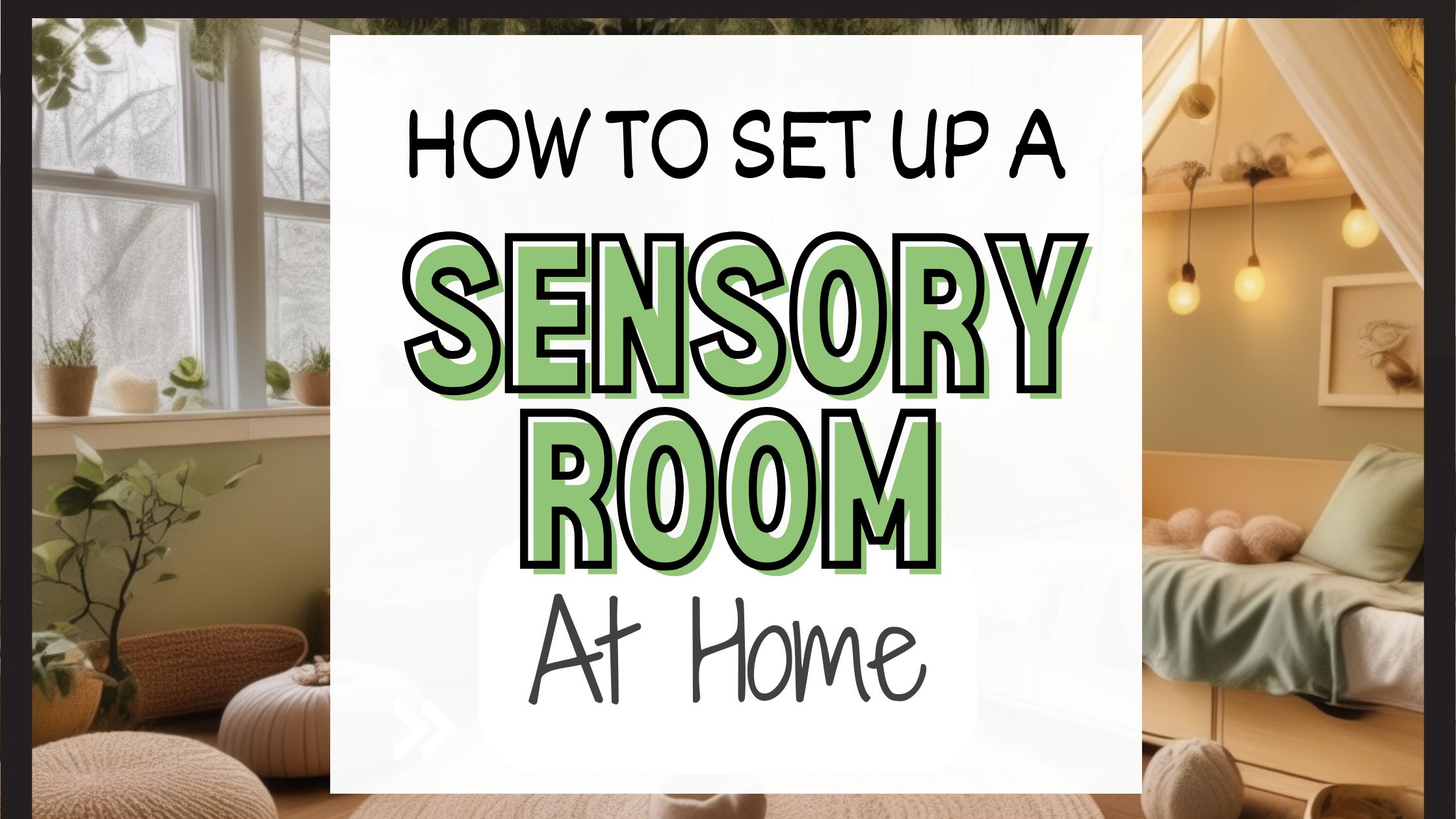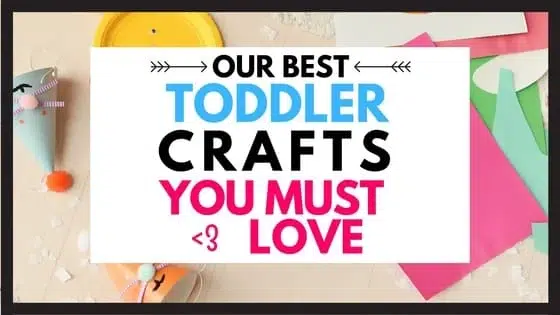I am not gonna lie, my sensory space for Luca is one shelf with all the sensory bottles I’ve created and a basket with other toys and sensory bin materials. We just recently moved into our half-finished apartment. (We still lack one wall – I mean it’s there, but in it’s raw glory) So I’ve been looking into creating a sensory room / sensory area within the playroom just for Luca.
Let’s dive into how you can create a dreamy sensory room, complete with tips, ideas, and lots of ✨ sprinkled in!
- What Is a Sensory Room? 🤔
- Why You Should Consider Creating a Sensory Room at Home 🏠
- How to Set Up a Sensory Room: Step-by-Step Guide 🛠️
- 10 sensory room ideas:
- 1. Soft Lighting with Fiber Optic Curtains 🌟
- 2. Bubble Tube Corner with Mirrors 💧
- 3. Tactile Wall Panels 🎨
- 4. Weighted Blankets and Bean Bags 🛋️
- 5. Glow-in-the-Dark Sensory Bottles ✨
- 6. Sensory Swing 🚀
- 7. Interactive Light Projector 🌈
- 8. Sound and Music Station 🎶
- 9. Nature-Inspired Sensory Corner 🍃
- 10. DIY Sensory Pathway 🌻
- Budget-Friendly Tips for Your Sensory Room 💸
- Conclusion 🌟
- Pin it for Later
- Latest Posts:
What Is a Sensory Room? 🤔
Before we get into the nitty-gritty of setting one up, let’s talk about what a sensory room actually is. A sensory room is a specially designed space that provides a controlled environment for kids to explore their senses—touch, sight, sound, smell, and even taste. These rooms are particularly beneficial for toddlers and children with sensory processing issues, autism, ADHD, or anxiety.

The goal is to create a space where your child can engage with various sensory stimuli in a safe and enjoyable way. Whether it’s calming down with soft lights and soothing sounds or getting energized with bright colors and tactile toys, a sensory room offers a range of experiences tailored to your child’s needs.
Why You Should Consider Creating a Sensory Room at Home 🏠
Creating a sensory room at home is more than just a fun project; it’s an investment in your child’s well-being. Here are a few reasons why you should consider setting up one:
Customizable Fun: You can tailor the sensory room to your child’s preferences and needs. It’s all about creating a space where they feel comfortable, happy, and engaged.
Promotes Calm and Focus: Sensory rooms can help your child manage overwhelming emotions by providing a calming environment. Whether it’s soft music, dim lighting, or gentle textures, the right sensory inputs can help your child relax and focus.
Encourages Exploration: Kids love to explore! A sensory room allows them to safely interact with various textures, sounds, and sights, which can boost their cognitive and motor skills.
Supports Development: Sensory play is critical for brain development, especially in toddlers. It helps them understand and respond to the world around them.
How to Set Up a Sensory Room: Step-by-Step Guide 🛠️
Now that you’re sold on the idea, let’s get down to the details of how to create your very own sensory room at home.
1. Choose the Right Space 📍
First things first, pick a space in your home that’s quiet and away from high-traffic areas. This could be a spare bedroom, a section of your child’s playroom, or even a large closet (seriously!). The key is to find a spot that can be transformed into a cozy and calming environment.
Tip: If you don’t have an entire room to spare, consider using a corner of a room with a partition or curtain to create a designated sensory area. Or create something like a tent.
2. Plan Your Sensory Zones 🎯
A good sensory room has different zones that cater to various sensory experiences. Here’s how you can break it down:
- Calming Zone: This area should be focused on relaxation. Think soft pillows, bean bags, or a cozy chair. You could also add dimmable lights or a bubble tube to create a soothing atmosphere. (I am thinking about a water fountain -where Luca can’t reach. He loves the one my grandparents have.
- Tactile Zone: Include a variety of textures like fuzzy blankets, squishy toys, or a tactile wall where your child can feel different surfaces. Don’t forget to check out Sensory Play Crafts for Toddlers for more hands-on tactile ideas!
- Visual Zone: This area should engage your child’s sense of sight. Think about adding colorful LED lights, glow-in-the-dark stars, or a projector that displays calming images. The Glow in the Dark Sensory Bottles can be a fantastic addition here!
- Auditory Zone: Include sound-based activities like wind chimes – Luca loves those -, a sound machine, bells, instruments, or even DIY Sound Sensory Bottles.
- Movement Zone: If you have the space, include items like a small trampoline, rocking chair, or balance board. These are perfect for kids who need to move to stay regulated.

3. Pick the Right Lighting 💡
Lighting plays a huge role in setting the mood of your sensory room. For a calming effect, opt for soft, dimmable lights, fairy lights, or even a salt lamp. On the other hand, if your child thrives on stimulation, consider a disco ball, fiber optic lights, or a light projector that can create colorful displays on the walls and ceiling.

4. Incorporate Sensory Bottles 🍼
Sensory bottles are a must-have for any sensory room. They’re easy to make, mess-free, and endlessly customizable. You can find tons of inspiration and how-to guides on creating different types of sensory bottles, like Layered Sensory Bottles and Nature Sensory Bottles.
Pro Tip: Sensory bottles can be used in multiple zones—place a few in your calming zone or visual zone for an added touch of magic. You can even get festive with Christmas Sensory Bottles during the holidays!
5. Add Tactile and Interactive Elements ✋
Now, let’s talk touch! Toddlers love to explore textures, so incorporate a variety of tactile elements into your sensory room. This could be as simple as a basket filled with different textured balls or as elaborate as a tactile wall with items like faux fur, sandpaper, and bubble wrap.
Don’t forget about the importance of sensory play crafts. Check out our Sensory Play Crafts for Toddlers for more ideas on DIY projects that can double as tactile experiences in your sensory room.

6. Incorporate Movement and Gross Motor Play 🏃♀️
If space allows, add elements that encourage movement. A mini trampoline, rocking chair, or even a hanging pod chair can help your toddler work out some energy while still being part of the sensory experience.
Consider a DIY obstacle course with items you already have at home, or add a crawling tunnel (Absolutelly loved that as a kid) for an extra dose of fun. Movement is crucial for sensory processing, so make sure your child has opportunities to engage their whole body.

7. Don’t Forget the Sounds 🎶
Sound can be both calming and stimulating, depending on what your child needs. From soothing white noise machines to DIY Sound Sensory Bottles, there are plenty of ways to add auditory elements to your sensory room. You could also include musical instruments like a xylophone, drum, or maracas for some interactive fun.
10 sensory room ideas:
1. Soft Lighting with Fiber Optic Curtains 🌟
- Create a calming atmosphere with fiber optic curtains that change colors. They provide visual stimulation and a gentle, soothing glow that can help toddlers unwind.
2. Bubble Tube Corner with Mirrors 💧
- Place a bubble tube in a corner surrounded by mirrors. The moving bubbles and changing lights captivate toddlers, while the mirrors reflect the lights, making the space feel larger and more engaging.
3. Tactile Wall Panels 🎨
- Install tactile panels with different textures like fuzzy, smooth, bumpy, and rough surfaces. Toddlers can explore the panels with their hands, providing rich sensory experiences.
4. Weighted Blankets and Bean Bags 🛋️
- Include a cozy corner with weighted blankets and bean bags. The gentle pressure of the blankets can be calming, while the bean bags create a comfortable space for relaxing.
5. Glow-in-the-Dark Sensory Bottles ✨
- Set up a collection of glow-in-the-dark sensory bottles. These are great for low-light environments and provide a soothing visual experience. Check out my post on Glow in the Dark Sensory Bottles for ideas!
6. Sensory Swing 🚀
- Install a sensory swing to offer gentle rocking motion, which can help with balance and coordination. It’s also a fun way to burn off energy while providing vestibular input.
7. Interactive Light Projector 🌈
- Use a light projector that displays moving patterns or images on the walls or ceiling. This can create a mesmerizing environment and spark your toddler’s imagination.
8. Sound and Music Station 🎶
- Create a sound station with musical instruments like drums, xylophones, and shakers. You can also include a sound machine that plays nature sounds or calming music for auditory stimulation.
9. Nature-Inspired Sensory Corner 🍃
- Design a nature-themed corner with faux grass mats, smooth stones, and soft leaves. This can be paired with natural scents like lavender or pine for a multi-sensory experience. Explore more ideas in my Nature Sensory Bottle post.
10. DIY Sensory Pathway 🌻
Create a sensory pathway on the floor using different textured mats or tiles. Toddlers can walk, crawl, or roll along the path, stimulating their sense of touch and improving motor skills.



Budget-Friendly Tips for Your Sensory Room 💸
Creating a sensory room doesn’t have to be expensive. Here are some ways to keep costs down while still making an awesome space for your toddler:
- DIY It!: Many sensory room elements can be made at home. DIY sensory bottles, tactile boards, and even obstacle courses can save you money and are super fun to create with your little one.
- Thrift It: Check out thrift stores for soft furnishings, lights, and even toys that can be repurposed for your sensory room.
- Reuse and Repurpose: Use items you already have at home! Old cushions, blankets, and even cardboard boxes can be transformed into sensory experiences.
- Minimalism Works Too: You don’t need to fill the room with everything at once. Start small and add items as you go, paying attention to what your child enjoys and benefits from the most.
Conclusion 🌟
Creating a sensory room at home isn’t just about giving your toddler a fun space—it’s about crafting a magical environment where they can explore, learn, and grow. Whether you go all out with custom lighting and equipment or keep it simple with DIY sensory bottles and soft textures, your little one will have a blast. Plus, you’ll have the peace of mind knowing that you’ve created a calming oasis that supports their development. So grab your imagination, a few supplies, and start transforming that room into the ultimate sensory wonderland!
What’s the one must-have item you’d include in your sensory room? Have you tried any DIY sensory activities that were a hit with your toddler? Share your ideas and experiences in the comments below—I’d love to hear from you!
Pin it for Later

📌 Pin now, read later! Save our guide on Pinterest and share the joy of sensory play with your friends and family. Don’t forget to browse through my other sensory play ideas for more inspiration—your toddler’s new favorite activity might just be a click away!
Latest Posts:
21+ Easy Father’s Day Coloring Pages Printable: (Free Download!)
Looking for a sweet, easy way for kids to show Dad some love this Father’s…
Easy Sticker Wall + Scribble Zone for Toddlers: Creative and Mess-Free
✨ A Simple Idea That Sparked Big Creativity The idea for this activity came from…
Simple and Fun Animal Walks for Toddlers: Boost Core Strength with Outdoor Gross Motor Play
I hated school sports. I am short, have bad eyesight and was always the last…
Arctic Ocean Sensory Bin DIY — The One Sensory Bin You Need to Try This Week
Creating an Arctic Ocean sensory bin has easily been one of our favorite indoor toddler…
9 Unique Last-Minute Mother’s Day Gift Ideas: What to Get My Mum for Mother’s Day
Mother’s Day has literally sneaked up on me — it’s in two days, and I’m…
Easy Dandelion Nature Soup – If You Wonder What To Do With my Toddler Outside?
Looking for an easy, screen-free way to keep your toddler entertained outside this summer? Dandelion…















Leave a Reply